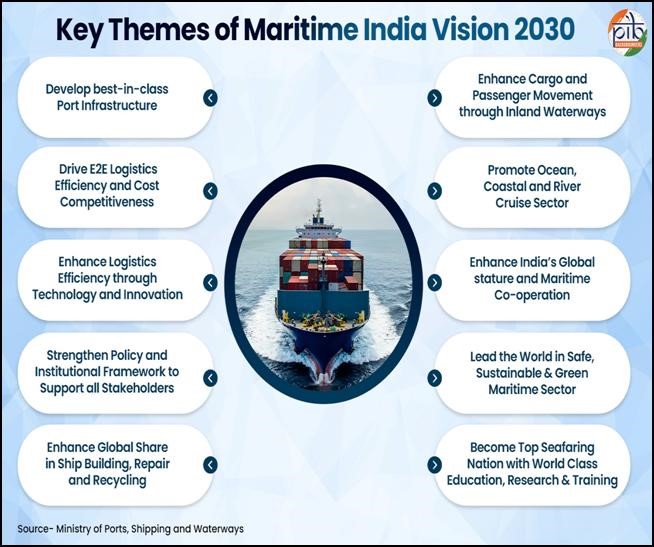7667766266
enquiry@shankarias.in
Mains: GS-III – Infrastructure – Ports & Shipping Sector
India’s maritime sector is undergoing a transformative journey under the Maritime India Vision 2030 (MIV 2030) and the ambitious Maritime Amrit Kaal Vision 2047.
Nearly 95% of the country’s trade by volume & around 70% by value moves through maritime routes.

Sagarmala Programme is a flagship initiative to transform India into a global maritime hub - core pillar of the MIV 2030 & Maritime Amrit Kaal Vision 2047.
India is preparing to not only meet its trade demands but also emerge as a maritime leader.
|
India Maritime Week (IMW) 2025 |
|
PIB | India’s Maritime Path: From Vision 2030 to Amrit Kaal 2047